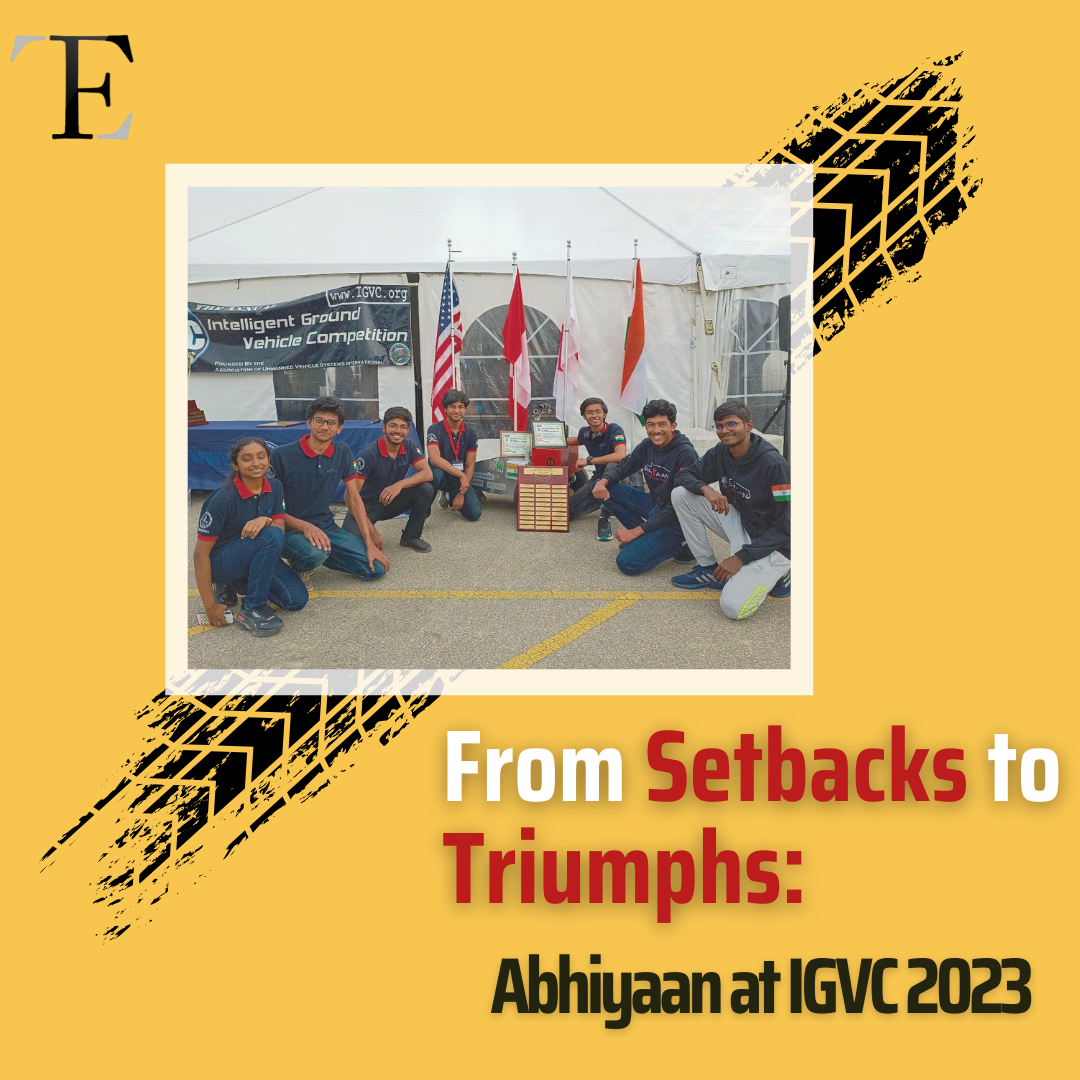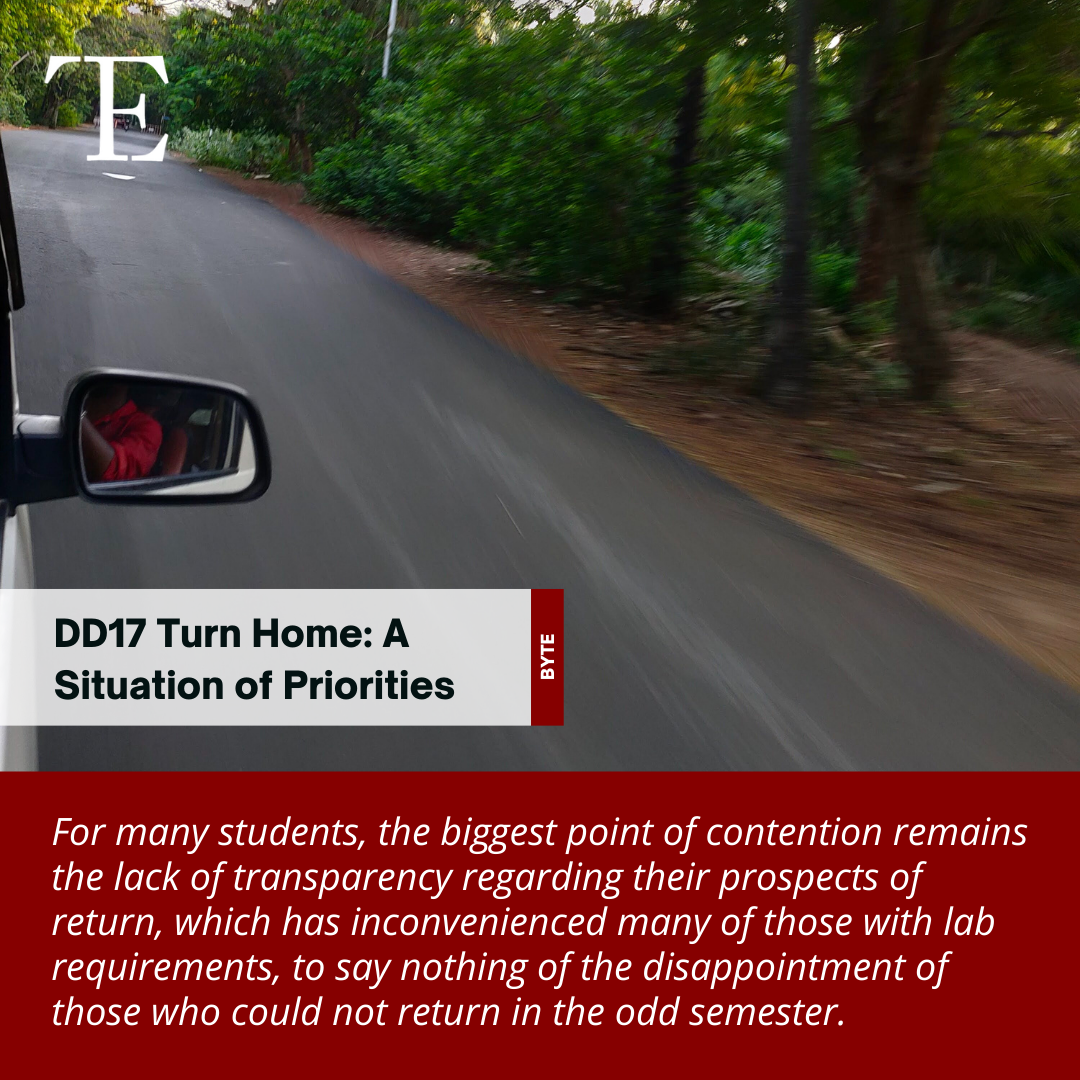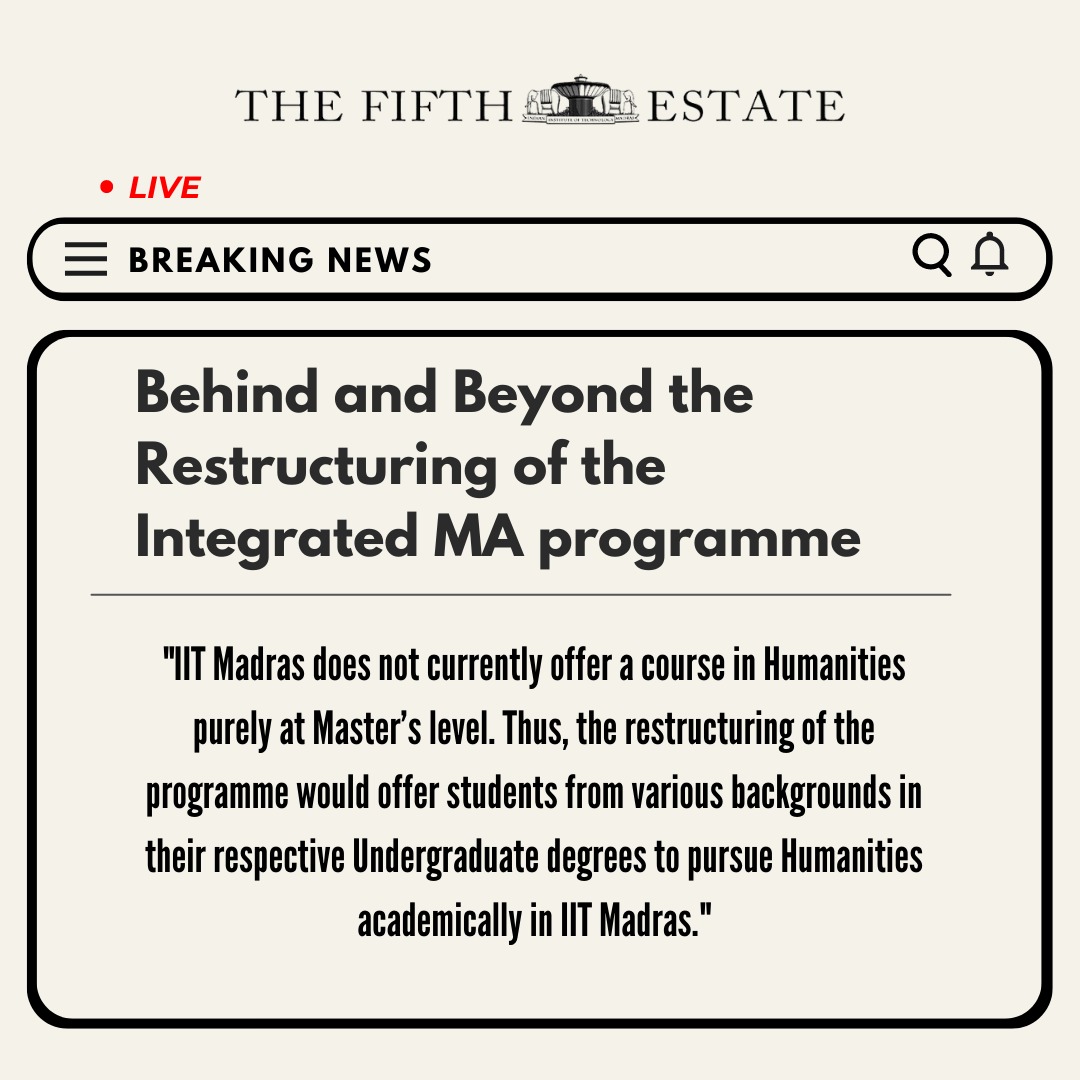Team Abhiyaan placed third overall in the Auto-Nav category of IGVC, an international autonomous vehicle competition, while placing first in two of the major challenges.
On a chilly June morning in Michigan, USA, Aayush and Dakshin, members of team Abhiyaan, went out to start their bot for the Auto-Nav competition to be held later that day. They went through the routine motions of switching everything on, until Dakshin reached for the inverter. As he tried to switch it on, he realised something was wrong. With growing dread, he called out to Aayush, “Dude, the inverter isn’t working…”
“We got to watch Murphy’s Law unfold in real life”, Aayush, a member of the Software Module, recalled wryly. “We had carried backups for every single piece of equipment. Even for the stereo cameras we use, which are incredibly reliable! The inverter is a big metal box; it was one of the only things we didn’t have a backup for”.
Thus, another frantic scramble began for team Abhiyaan, as they ran to the nearest Walmart, desperately trying to find a replacement. Over the next six to eight hours, they replaced and reconfigured multiple components of their bot, working at a feverish pace to ensure their bot didn’t crash due to the different electrical power conversions in the USA, barely making it in time for the final run of Day 1. This was one of the countless struggles they faced before triumphantly coming third overall in the Auto-Nav category of the 30th Annual Intelligent Ground Vehicle Competition(IGVC), held by Oakland University.
What is IGVC?
The IGVC is an international autonomous vehicle competition held in the city of Rochester, in the United States of America. Team Abhiyaan participated in the Autonomous Navigation category, in which a panel consisting of a myriad of US military experts and scientists in the field of Ground Navigation judges the entries in several challenges: the Design Challenge, the Cyber Challenge, and the Auto-Nav Challenge. Abhiyaan was originally founded with the purpose of participating in this competition. It has since expanded its scope to dealing with multiple projects surrounding the theme of Autonomous Ground Navigation, such as its autonomous Golf Cart, Bolt. Over the years, it has created 5 iterations of bots for the IGVC, including this year’s submission, named Vikram.
While the Design Challenge and Cyber challenge involve presenting the results and achievements of the bot to a set of panelists, the Auto-Nav challenge involves running the bot through an obstacle course multiple times over the course of three days. Five “Heats”, each consisting of three chances to run the bot over the course, are given to each qualifying team. The best run over all of these attempts is taken for final evaluation and scoring.
Abhiyaan has performed impressively in its short history in the competition. Placing a team-high second overall in 2019, they followed it up with a special mention in 2022, despite having only two months of effective time on campus due to COVID-19 related restrictions. This year, ambitions for the competition weren’t any lower, as the team innovated and designed multiple in-house systems, both for the IGVC as well as other projects in its domain.

The Tech Behind It All
Based on the experiences from previous years during testing, the team decided to build a simple Battery Management System. “Many times during testing, all of our systems would crash due to the battery running out, and that’s obviously not something you want”, said Aayush. In order to solve this problem, which was applicable for all of their projects, the team decided to create a system to monitor the battery levels of their bots.
This was achieved by using current sensors to determine the power drawn from the battery. These readings were then integrated in order to obtain the energy level of the battery that is being monitored.
Another improvement made by the team this year was the incorporation of an Adaptive Model Predictive Controller to the bot. Unlike a standard PID Controller, an Adaptive controller does not have any parameters to tune, making it a much more robust design choice, as it is able to adapt to a variety of different environmental conditions. It achieves this by performing an optimisation of the output action to take based on the data available to it from previous attempts. The design and coding for this controller was done completely in-house, as was explained by Vamsi, a member of the Electrical Module.
Finally, another major improvement was achieved by the mechanical module of the team. “We developed our own in-house suspension system, in order to better deal with the needs of the bot.”, said Advait, a member of the Mechanical Module, while explaining the changes to the design. “Most notably, we have incorporated suspension on the rear caster wheel of the bot”, he added, explaining that they noticed that the major source of shocks and mechanical damage was coming from the jerks of the caster wheels. The new trailing-arm suspension setup was tested by the team in order to decide on design specifications such as the geometry and stiffness of the springs chosen.
Unlike most conventional designs that use caster wheels, team Abhiyaan has incorporated the caster wheels behind the two drive wheels. This allows for more stable straight line motion, and also helps in the bot’s performance when negotiating ramps, by allowing for a stable climb.
Work on the bot accelerated the day after endsems ended. Team members routinely spent ten to twelve hours a day working on finalising and fine tuning the bot, as well as figuring out the various logistic complexities involved in transporting their entire year’s work along with them to the United States. “There were many days when I’d come to work at 4 AM, only to see Advait sleeping while working on something else”, said Aayush.
Hiccups…
After performing quite impressively in both the Design and Cyber Challenges, the final event to occur was the Auto-Nav Challenge. “The failure of the inverter could not have been timed any worse”, said Aayush. “It occurred on the first day of the Auto-Nav competition, and while we were able to get the bot running on the same day, we were only able to attend two of the five Heats.” As if this wasn’t enough, due to the electrical problems, and perhaps because of the increased electromagnetic interference due to the different inverter specs, their GPS started to malfunction as well.
Since the competition involves the teams learning from previous runs along the course in order to increase performance, these issues led to a disappointing tenth place finish for the team. While reflecting on the team’s performance, Advait said, “Because of these systems cupping one after the other, we didn’t have sufficient time to optimise our bot to the course. It did run, it’s just that we lacked the time to optimise (our bot to) the course. Maybe, had we had a day more, we could have been much better.”
Celebration!
Despite these problems, there were many moments of celebration during the competition, on their way to coming 3rd overall. The team still remembers the moment that the Design Challenge results were released fondly. The rankings of the 6 finalists, one of which was Abhiyaan, were announced from last to first. The team held their breath as the sixth, fifth, and fourth team names were announced. Team Abhiyaan was not among them. “So we knew we were in the top 3 already”, said Saiharan, a member of the Software Module, recalling the tense moment. Next, came the announcement for 3rd place; still not them. Finally, the announcement for second place came; “Memorial University and it’s bot, B.O.A.T!” Team Abhiyaan exploded into celebration. They had come first. “I mean honestly, we shouted louder than the team that came second. When they announced the results for the second team, we all started shouting, because we knew we had come first”, said Aayush, laughing.
Of the multiple Indian teams that came to participate in the event, Abhiyaan was the only one to make it to the finals. Teams from VIT, and MIT, came rushing over to celebrate the outstanding result of an Indian team. “Throughout the whole competition, the mindset of all the teams was more towards collaboration, rather than competition”, said Saiharan. “Every time a team won, everybody else would gather around to congratulate and celebrate with them.”
The Next Step
When asked about their plans for the future, the team had many things to say. “The first thing we did after coming back was to make a Google doc of all the problems we faced during this year’s competition, and how we plan to fix them for next time”, said Aayush. “For example, we should probably use Faraday cages to isolate the IMU from other electromagnetic interferences next year, to prevent interference with other sensors. We’ll pass this doc on to our Juniors.”
“Finally, a win is more a testament to the team’s capabilities, rather than the team’s preparation,” said Saiharan. Aayush added on, saying, “It’s all about being crafty, and how you can come up with solutions on the spot, because you are going to face problems there, no matter how well you prepare.”
“We will definitely be participating next year”, added Advait firmly. “and we will try to ace the obstacle course.” Here’s hoping for another stellar result next year, from Team Abhiyaan!
Edited by: Ankita Murthy
Design: Rahul Garikapati

Nachiketh Grandhi
A student of Engineering Design in IIT Madras. Interested in education, sustainable technologies, and agriculture.




